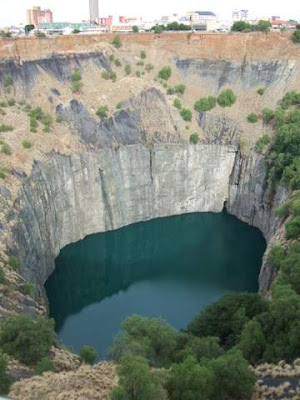I contacted Wicus at Cemforce, and explained what I'd been up to since I arrived in South Africa. He very kindly invited me down to Kimberley to check out the factory and see what he’s been up to.
I was pretty excited at this point :-) If Esibayeni could partner with a company that were already producing loos, then it might be possible for them to get someone experienced to assist Esibayeni with setting up a factory, reducing the risk associated with setting up the factory.
This would be quite a nice way for me to end my placement, since I am returning to the UK in a few weeks, and after visiting the factory Esibayeni would be in a good position to decide either carry the project forward in a big way, or see the factory and decide that its too much to take on.
So... I asked Andre, who helps run Esibayeni, and he agreed to come down to see the factory! Hurrah!
 The drive to Kimbeley, in the Northern Cape province of South Africa, took 11 hous each way (and Andre insisted on driving the whole way, he must be mad!) Anyway as well as the glamorous claim to being home to a prefab latrine factory, Kimberley is the birthplace of the De Beers Diamond mining company, which was started up by Cecil Rhodes and his cronies. There are lots of Diamond mines in Kimberley, including the Big Hole, which is completely hand-dug until it closed in 1914 and is absolutely massive...I'll save you the stats :-)
The drive to Kimbeley, in the Northern Cape province of South Africa, took 11 hous each way (and Andre insisted on driving the whole way, he must be mad!) Anyway as well as the glamorous claim to being home to a prefab latrine factory, Kimberley is the birthplace of the De Beers Diamond mining company, which was started up by Cecil Rhodes and his cronies. There are lots of Diamond mines in Kimberley, including the Big Hole, which is completely hand-dug until it closed in 1914 and is absolutely massive...I'll save you the stats :-)











